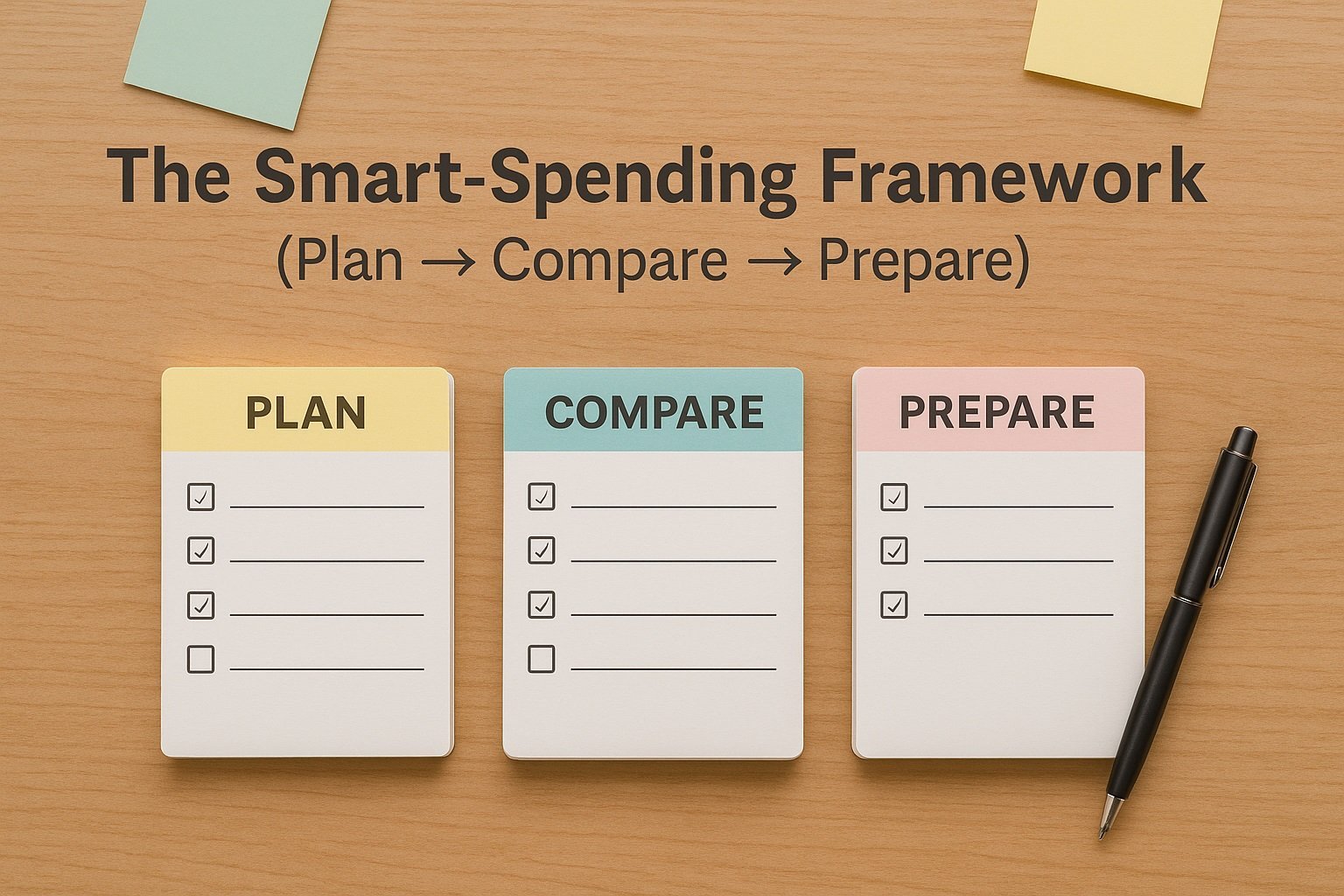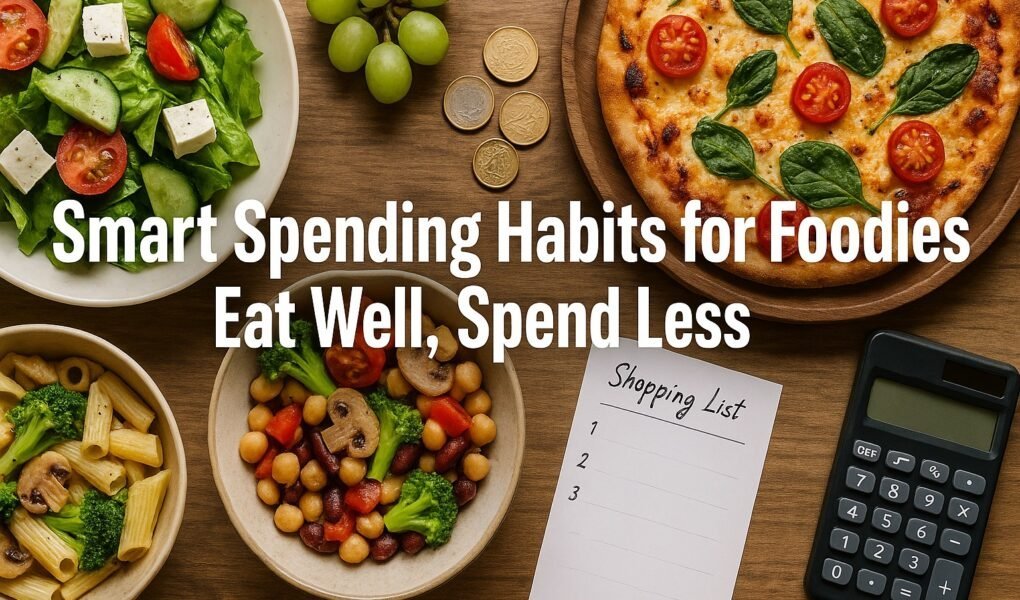If you consider yourself a foodie, you know there’s nothing quite like the thrill of discovering a new flavour combination or indulging in a restaurant-quality meal at home. But between impulse buys on gourmet ingredients and those “just one more appetiser” moments, it’s all too easy for your food bill to balloon. According to recent USDA data, grocery prices have risen steadily over the past few years, putting extra pressure on your budget. The good news? With a few chef-backed tactics, you can enjoy top-tier tastes without draining your wallet. In the next sections, you’ll get an 11-step playbook built around a simple Plan → Compare → Prepare a framework that can help you whip up incredible meals at home for up to 30–50% less than you’re spending now.
Why Foodies Overspend: Understanding the Palate–Wallet Tug-of-War

It starts innocently enough: a craving for artisan cheese, a standing reservation at the hottest new spot, or a checkout impulse when you see that limited-edition spice. As food lovers, we often give ourselves permission to splurge. Treat yourself,” we say, celebrating small wins with decadent meals. Then there’s FOMO: tasting-menu experiences that feel like bucket-list items. Before you know it, your grocery cart is brimming with speciality items you’ll use once, and your restaurant tabs add up faster than you can savour each bite. Recognising these psychological triggers is the first step to reclaiming control because when you know why you overspend, you can choose smarter habits instead.
The Smart-Spending Framework (Plan → Compare → Prepare)

Building on the USDA’s three-step mantra for saving on food costs, this framework helps you channel your foodie passion into smarter spending.
Plan
-
Weekly meal map
Sketch out your dinners (and lunches, if you pack them) for the week. When you know you’re making a stir-fry on Monday and lasagna on Wednesday, you avoid those “What should I cook tonight?” moments that lead to expensive takeout. -
Pantry inventory
Before you shop, audit what you already have: spices, grains, canned goods, and even that half-jar of tahini. You’ll reduce waste and prevent buying duplicates. -
Flavor-budget worksheet
Set aside a small “splurge fund” for high-impact ingredients – think saffron or truffle oil – and then balance it by choosing more budget-friendly staples elsewhere. This keeps your meals exciting without derailing your overall grocery budget.
Compare
-
Unit-price math
Check the per-ounce or per-pound cost on labels, not just the sticker price. A larger package often saves money in the long run, but only if you’ll actually use it before it spoils. -
Loyalty apps
Download your favourite store’s app to stack digital coupons, track points, and get member-only deals on items you already buy. -
Seasonal produce hacks
When berries are at peak season, they’re often half the price (and twice as sweet). Plan your meals around what’s in season locally to get the best quality at the lowest cost.
Prepare
-
Batch-cook & freeze
Make double batches of soups, stews, or sauces on the weekend. Portion and freeze in meal-ready containers so you have gourmet-level dinners on busy weeknights with no last-minute delivery fees. -
Mise-en-place for weeknights
Chop veggies, marinate proteins, or precook grains in advance. When Thursday evening hits, you’ll spend minutes assembling instead of half an hour prepping. -
Waste-nothing storage
Use clear, labelled containers so nothing gets forgotten in the back of the fridge. Store herbs in water jars with a plastic bag cover to keep them fresh twice as long. -
Smart portion control
Divide family-style dishes into individual servings before reheating; you’ll fight overeating and avoid reheating more than you need. -
Leftover remix sessions
Turn last night’s roast veggies into a breakfast frittata or blend wilting greens into a pesto. A little creativity transforms scraps into new culinary highlights.
By understanding why your foodie heart tempts you to overspend and then following the Plan → Compare → Prepare framework, you’ll soon see your food budget shrink without sacrificing any of the flavour that makes you a true epicurean.
11 Strategy Steps to Eat Well & Spend Less

| # | H3 Sub-Step | Key Take-away |
|---|---|---|
| 1 | Build a flavour-first budget. | Allocate a “splurge fund” for truffles and aged cheese; save elsewhere. |
| 2 | Master Seasonal & Local Shopping | In-season = better taste & lower cost. |
| 3 | Shop Like a Pro | Make a list, shop the perimeter, and reach for the back. |
| 4 | Bulk-Buy & Portion-Freeze | Lower unit cost without palate fatigue. |
| 5 | DIY Gourmet Staples | Stocks, spice blends, and flavoured oils at <⅓ store cost. |
| 6 | Harness Tech & Digital Coupons | Apps like Ibotta, BudgetBytes, and MealsHero planners. |
| 7 | Zero-Waste Fridge Management | Label the FIFO “eat-me-first” bin. |
| 8 | Host Foodie Nights at Home | Restaurant-quality experience for friends at <½ price. |
| 9 | Smart Take-Out Rules | Pre-planned “treat nights”, share entrées, and skip drinks. |
| 10 | Grow & Forage Micro-Greens & Herbs | $2 seeds → $60+ organic herbs per season. |
| 11 | Real-World Case Study: $350/Month Saved | Highlight viral news story of Memphis couple. |
-
Build a flavour-first budget.
Before you even open your wallet, set aside a small “splurge fund” dedicated to those must-have gourmet treats – think truffle oil or an aged Parmigiano-Reggiano. By defining that bucket of premium spending, you’ll feel empowered to enjoy a luxurious ingredient here and there while consciously choosing more budget-friendly staples elsewhere. -
Master Seasonal & Local Shopping
When you embrace seasonal produce, you’re tapping into peak flavours at rock-bottom prices. Strawberries in summer are not just sweeter; they’re also often 30–50% cheaper than their off-season counterparts (Food Network). Hit your local farmers’ market or the produce section at your grocery store when fruits and veggies are in full swing. -
Shop Like a Pro
A little prep goes a long way. Jot down a focused shopping list grouped by aisle, start around the perimeter (where whole foods live), and reach to the back of the shelves for lower-priced items tucked behind the eye-level brands (Food Network). You’ll steer clear of impulse buys and snag better deals on the things you actually planned to buy. -
Bulk-Buy & Portion-Freeze
Stocking up on staples like rice, beans, or your favourite cut of meat can slash the per-unit price dramatically. Just portion them into meal-sized bags before freezing so you never get bored of eating the same thing every night (MVCU). -
DIY Gourmet Staples
Rather than buying premade stocks, spice blends, or flavoured oils at premium prices, make them yourself. Homemade chicken stock, herb-infused olive oil, and custom curry powders often cost less than a third of the store-bought version, and you control the salt and freshness. -
Harness Tech & Digital Coupons
Let your phone do the saving. Apps like Ibotta and BudgetBytes offer cash-back on everyday items, while meal-planning tools such as MealsHero help you build a shopping list around sales and coupons (MVCU; MealsHero). A few clicks can translate into real dollars back in your pocket. -
Zero-Waste Fridge Management
Nothing stings more than realising that that half-used jar of pesto has gone mouldy. Adopt FIFO (first in, first out) by labelling containers with dates and creating an “eat-me-first” bin on the top shelf. You’ll use up ingredients before they spoil (Simple Bites). -
Host Foodie Nights at Home
Re-create that tasting-menu vibe for friends and family in your own dining room. By prepping small plates and house-made cocktails, you deliver a gourmet experience for less than half the cost of a night out. -
Smart Take-Out Rules
Plan your “treat nights” in advance and stick to them. When you do order in, split a large entrée family-style and skip high-markup beverages. A shared pizza and sparkling water can feel just as indulgent when done intentionally. -
Grow & Forage Micro-Greens & Herbs
A packet of microgreen seeds costs around $2 but yields up to $60 worth of fresh herbs and shoots over a growing season (MVCU). A sunny windowsill or a small balcony container garden can keep your dishes bright and budget-friendly. -
Real-World Case Study: $350/Month Saved via Meal-Prep
A viral story out of Memphis followed a couple who committed to Sunday meal prep and bulk shopping. By batch-cooking five core recipes and remixing leftovers through the week, they cut their combined grocery and dining-out bill by $350 every month and still enjoyed new flavours every night.
Put these steps into practice, and you’ll find that savouring incredible food doesn’t have to come at a premium. Instead, with a few smart swaps and a dash of creativity, you’ll stretch your foodie budget further than you ever thought possible.
FAQ Section (optimized for People-Also-Ask)
How can I eat like a foodie on a tight budget?
You don’t need a fat wallet to savour gourmet flavours. Start by embracing seasonal produce. Those ripe tomatoes or berries will taste incredible and cost less when they’re in peak season. Next, bulk-buy pantry spices like smoked paprika or cumin, and whip up your own sauces and dressings instead of buying expensive jarred versions. A little miso paste or capers can transform humble beans, rice, or roasted veggies into restaurant-worthy dishes without blowing your budget.
Is meal-prepping really cheaper for food lovers?
Absolutely. When you batch-cook soups, stews, and sauces on a Sunday, you’re buying ingredients in larger quantities (often at better per-unit rates) and cutting down on last-minute takeout splurges. Real-world case studies show dedicated meal preppers saving between $250 and $350 per month, all while enjoying diverse, gourmet-style dinners throughout the week.
What apps help track grocery spending and deals?
Let technology do the heavy lifting. Ibotta and Flipp automatically match your shopping list to available coupons and rebates, so you never miss a markdown. Meanwhile, MealsHero can generate a meal plan and shopping list based on current sales in your favourite stores. With these tools on your phone, you’ll spot deals before you even head to the store.
How do I cut meat and seafood costs without losing quality?
Think whole, not pre-cut. Buying a whole chicken or an entire fish usually works out cheaper per pound than boneless breasts or fillets. Portion and freeze what you won’t use right away, and save the carcass or bones to simmer into rich, flavourful stock. Also, keep an eye out for flash-freeze sales on larger packs of shrimp or salmon; you can break them into meal-sized portions and maintain restaurant-grade quality at home.
Are organic ingredients worth the price?
Organic can be a smart choice, especially for the “Dirty Dozen, ”produce known to carry higher pesticide residues. But for low-residue items like avocados, pineapples, or onions, the conventional versions are just as safe and often half the price. And if you love the idea of fully organic meals, look for store-brand options, which typically cost less than premium-name labels but deliver the same certification standards.

